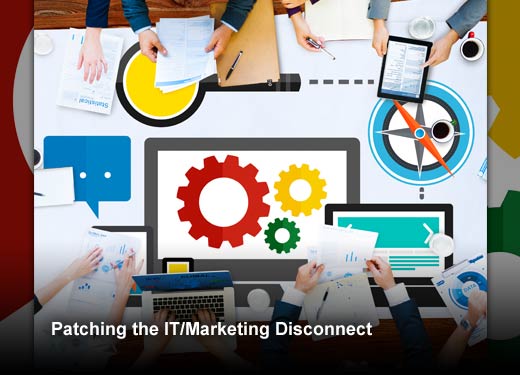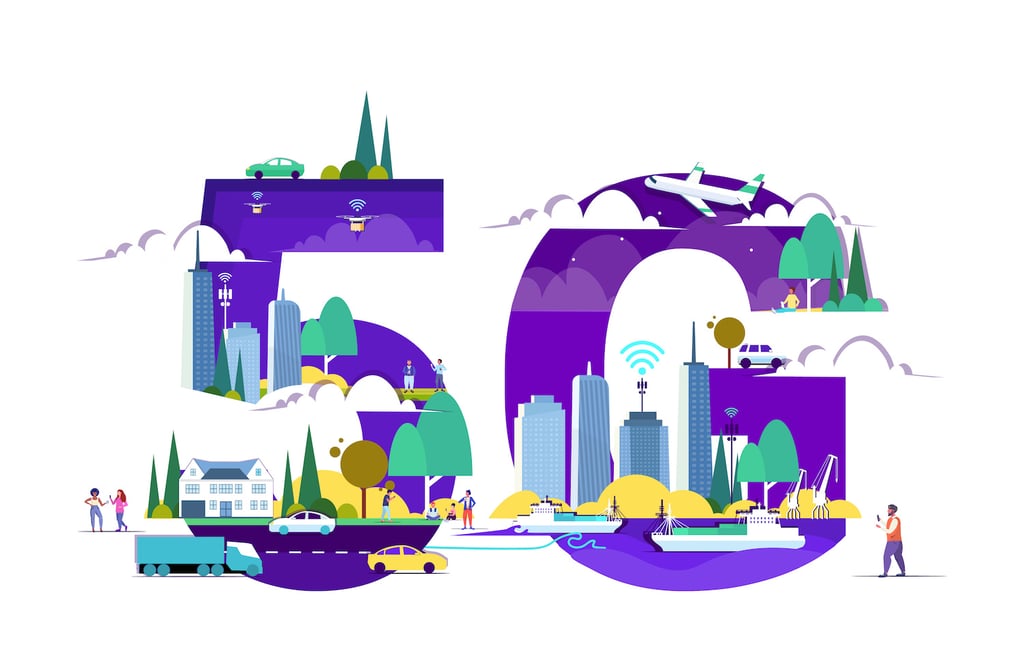The CIO has traditionally led the charge when it comes to purchasing and adopting new technologies, but this is rapidly changing as cloud‐based specialty applications — such as lead generation, marketing automation and CRM — are gaining momentum with marketing and sales teams. The modern CMO actively looks for and makes decisions about new technologies. In fact, Gartner predicts that IT spending will continue to trend heavily towards sales and marketing solutions.
This trend is further fueled by the adoption of SaaS solutions and the consumerization of enterprise technology, which can make it easier for teams to implement new solutions quickly with minimal involvement from IT (or when they just don’t have the time or patience to wait for help). At the same time, IT departments take on the risk for compliance and security for solutions that they may not have selected or even known about beforehand.
All of these factors converge to create an environment where CIOs and CMOs find themselves most frequently at odds, and this tension can ripple throughout an organization. However, the roles of CIO and CMO actually involve a lot of overlap. The roles are more closely aligned than they may seem, with both requiring data expertise, a focus on customer‐centric operations, and understanding what is going in other parts of the business. In this slideshow, ClearSlide has identified five things CIOs and CMOs can do to patch the IT/marketing disconnect.

Patching the IT/Marketing Disconnect
Click through for five steps CIOs and CMOs can take to patch the divide between marketing and IT, as identified by ClearSlide.

Align on Metrics
Metrics define success, whatever the department. CIOs and CMOs can achieve greater alignment by working together to define common metrics that both departments can strive for. Marketing already operates with explicit customer-focused achievement goals; however, when you boil it down, all departments exist to serve the customer. As IT broadens its focus on traditional measures like cost efficacy and service uptime, marketing and IT can more seamlessly work together to boost performance metrics like revenue, ROI and customer satisfaction.

Speak the Universal Language of Data
Data is now the currency in every department – this is a clear area where CMOs and CIOs can come to agreement. IT can provide strong technical support to enable marketing, and the analytics generated by marketing and sales tools can inform IT — not to mention product development and production decisions. Data is a common language to work from and collaborate on.

Focus on Mobile
Mobile technology used to be a major headache for IT departments with all the important security and compliance concerns. As mobile solutions and smartphones become even more critical for field-based sales and service roles, access to mission-critical SaaS apps and systems is key. Fortunately, many of the concerns surrounding mobile are fading as mobile developers build more robust, enterprise‐grade security protocols. IT can work collaboratively with sales and marketing to ensure they have the right mobile solutions.

Integrate, Integrate, Integrate
Communication and collaboration flow more smoothly when there are fewer barriers, and this principle extends to the various sales and marketing applications teams use. By integrating applications with APIs to share data and enhance reporting, IT can make itself invaluable to marketing and sales (not to mention every other business unit). Integration is an opportunity for IT to drive efficiency across the organization and ensure systems are working together effectively.

Make Security a Priority
Security is a priority for every department, but in the push to satisfy the needs of customers, marketers may not always place security at the top of their priority list. It’s easy to relegate security to just the domain of IT, but when companies are working with customer data and private information, all groups need to take security seriously. Marketers need to treat security with the same seriousness as CAN-SPAM and privacy laws. As marketing and sales bring on new cloud-based solutions, it’s vitally important to protect against hacks and other breaches, which are both IT and marketing/PR crises. Strong security benefits everyone.














